Where in the unholy heck did all these bees come from?!
Personal Finance
Wait, does America suddenly have a record number of bees?
Published
1 year agoon
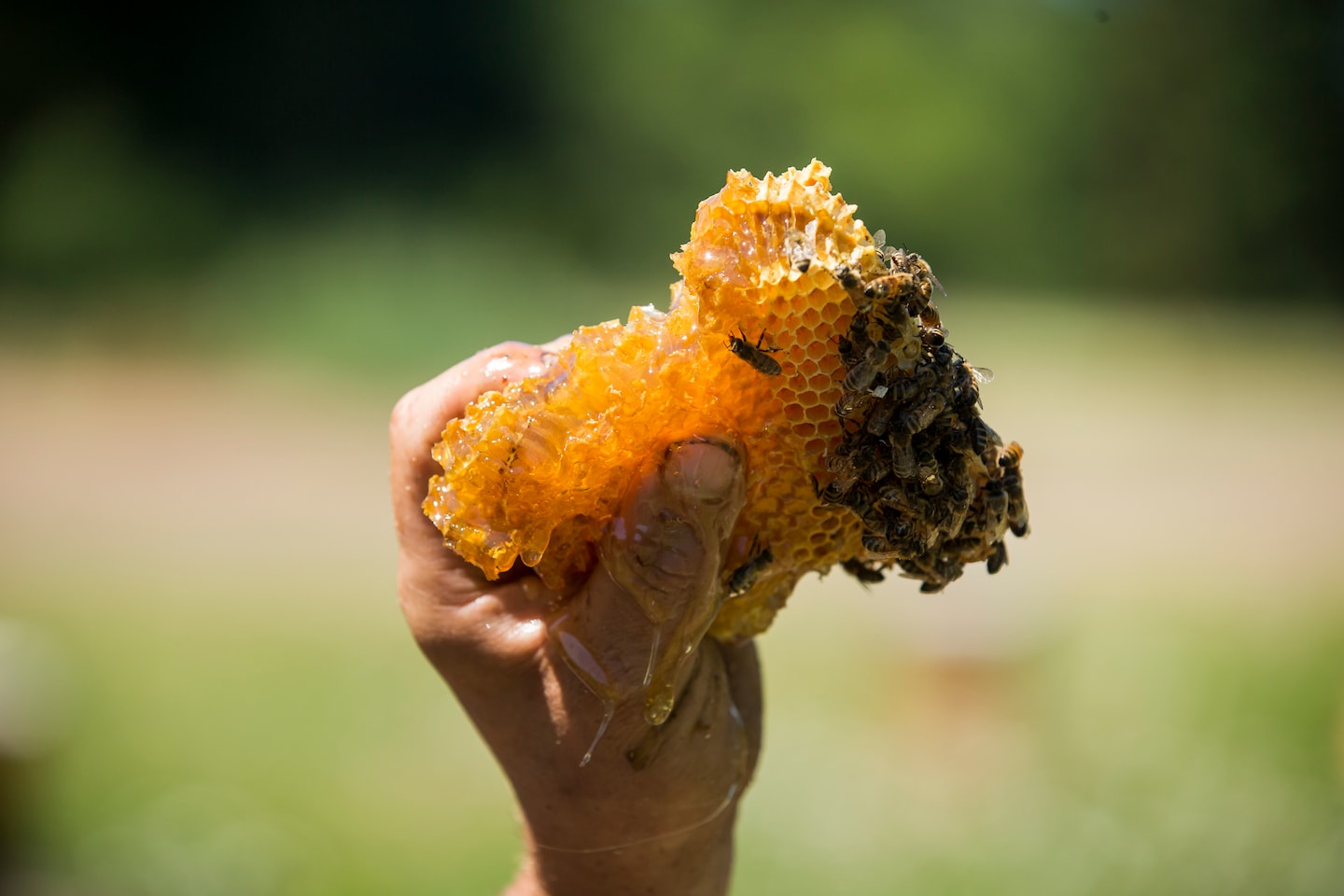
We’ve added almost a million bee colonies in the past five years. We now have 3.8 million, the census shows. Since 2007, the first census after alarming bee die-offs began in 2006, the honeybee has been the fastest-growing livestock segment in the country! And that doesn’t count feral honeybees, which may outnumber their captive cousins several times over.
This prompted so many questions. Does this mean the insect apocalypse is over? Are pollinators saved? Did we unravel the web of maladies known as colony collapse disorder?
But let’s start with the most important question: Is there, in fact, a bee boom?
We consider the census from the National Agricultural Statistics Service (NASS) to be the gold standard, but another data set from those quantitative crusaders, the annual honey report, actually shows bee colonies losing ground.
Agriculture Department economist Stan Daberkow, who helped write the definitive comparison of these sources, retired in 2008 but continues to follow the beekeeping business closely. When we tracked him down, he dove headfirst into our data mystery, sending us theories and exchanging emails at 1:35 a.m. and beyond.
Like any source produced by humans and constrained by budgets, Daberkow said, the honey report and Census of Agriculture have their limitations. The honey report focuses on operations with five or more hives, while the census includes every farm in the country. In this case, “farm” means any plot of land that sells at least $1,000 of agriculture products in a year, a measure that could include more hobbyists and dabblers in the buzz biz.
Inflation also increases the share of beekeepers who qualify for the census: The Agriculture Department’s $1,000 farm definition hasn’t changed since 1975. So as honey prices, pollination fees, hive prices and other sources of bee revenue rise, more hobbyists will magically transmogrify into “farmers.” Some of those new farmers, plus others discovered through census outreach efforts, might get added to the honey report. So next year’s honey report could paint a sunnier picture.
Daberkow said he was somewhat “leery” of the latest census data. Given less-than-ideal recent honey prices, major producers shouldn’t have much incentive to expand their operations. “Any growth would likely have come in smaller operations, a demographic USDA goes to great lengths to track down for the census,” he said.
Sure enough, the census shows the number of operations with any bee colonies has ascended far faster than honey production or bee-colony counts — about 160 percent since 2007.
Much of the explosion of small producers came in just one state: Texas. The Lone Star State has gone from having the sixth-most bee operations in the country to being so far ahead of anyone else that it out-bees the bottom 21 states combined.
Our data showed the biggest increases in north Texas, a region not traditionally considered a honey hotbed. So we started dialing beekeepers to ask what was going on. The first thing we learned? Our job would be half as hard and twice as joyful if all our sources were Texas bee boosters. Every last one seemed genuinely thrilled to pick up the phone.
Consider John Talbert of Sabine Creek Honey Farm, age 85. A past president of both the Association for Facilities Engineering and the Texas Beekeepers Association, Talbert takes a spoonful of honey before bed each night and brings a jar of wildflower honey to every politician he meets. He does the same for his doctor and his dentist.
“That’s so small that it couldn’t be considered a bribe,” Talbert told us. “It’s just a gesture of good faith!”
Talbert is such an infectious evangelist, we suspect that he and his many protégés could have propelled the great American bee resurgence by enthusiasm alone. But the Texas beekeepers all pointed to one clear reason for the bee boom — and that reason answered the phone on our second try.
Dennis Herbert wouldn’t strike you as a political mover and shaker. A retired wildlife biologist, Herbert, 75, boasts of no fancy connections and drops no names. But in 2011, after keeping bees for a few years, he went to the Texas legislature and laid out a simple hypothetical.
“You own 200 acres on the other side of the fence from me, and you raise cotton for a living. You get your ag valuation and cheaper taxes on your property. I have 10 acres on the other side of the fence and raise bees, and I don’t receive my ag valuation. And yet my bees are flying across the fence and pollinating your crops and making a living for you,” Herbert said. “Well, I just never thought that quite fair.”
In 2012, the Herbert Hypothetical gave rise to a new law: Your plot of five to 20 acres now qualifies for agriculture tax breaks if you keep bees on it for five years.
Over the next few years, all 254 Texas counties adopted bee rules requiring, for example, six hives on five acres plus another hive for every 2.5 acres beyond that to qualify for the tax break. Herbert keeps a spreadsheet of the regulations and drives across the state to educate bee-curious landowners.
Herbert himself doesn’t qualify for the exemption. His modest homestead in the tiny town of Salado, about an hour north of Austin, isn’t big enough. But, he says, “more bees provide more pollination, and so I get to eat a little better. I get my watermelon during the summer. And that doesn’t make me anybody special at all. I just, I like my watermelon.”
While Herbert never intended it, Texas bee exemptions have become big business. That has created an opportunity for Gary Barber, a former newspaper photographer.
Barber got bit by the bee bug after he left the Dallas Morning News in 2014. His firm, Honey Bees Unlimited, now leases and runs 1,500 hives for 170 clients in eight counties north of the Dallas-Fort Worth metroplex. As developers split the once-rural countryside into five- and 10-acre ranchettes, he’s signing up new clients faster than he can split hives to place on their land.
“It’s crazy, the blanket of bees over these counties!” Barber said. “Honestly, it’s not bee country: You’re not going to make it like a traditional beekeeper. But it’s really great because … now we’ve got pollinators all around!”
Barber has risen to become vice president of the Texas Beekeepers Association and promotes the industry alongside Herbert — especially every other year when the Texas legislature is in session.
“There’s usually some legislator that wants to mess with [the tax break], and we’ve got to go tell them why it’s great,” Barber told us. “And luckily, while our two political parties don’t agree on much, they all seem to want to save bees.”
These Texans helped explain the rise in beekeeping operations. And they built our trust in the Census of Agriculture as a purveyor of weird truth. But even with its army of small producers, Texas still ranks only sixth in the number of actual bee colonies. To find the true core of the bee boom, we had to make like the Village People and go west.
When the census was taken in December 2022, California had more than four times as many bees as any other state. We emailed pollination expert Brittney Goodrich at the University of California at Davis, who explained that pollinating the California almond crop “demands most of the honeybee colonies in the U.S. each year.”
Every February and March, something like 170 million almond trees unite in one of Earth’s great synchronized acts of sexual reproduction — made possible by the migration of the bees.
Pollination — not honey prices — has been the true rocket booster strapped to the back of the modern beekeeping industry. And almond pollination is responsible for $4 of every $5 spent on bee fertility assistance in the United States, according to NASS.
America’s almond acreage has more than doubled since 2007 as the world’s food firms race to stuff the nut into every conceivable granola mix, nut butter and milk substitute. So it seems reasonable to assume the honeybee population doubled along with it. After all, those almonds aren’t pollinating themselves.
(Editor’s note: Some of those almonds are, in fact, pollinating themselves. But self-pollinating trees remain a small minority.)
So the situation on the ground seems to confirm the census: We probably do have a record number of honeybees.
Sadly, however, this does not mean we’ve defeated colony collapse. One major citizen-science project found that beekeepers lost almost half of their colonies in the year ending in April 2023, the second-highest loss rate on record.
For now, we’re making up for it with aggressive management. The Texans told us that they were splitting their hives more often, replacing queens as often as every year and churning out bee colonies faster than the mites, fungi and diseases can take them down.
But this may not be good news for bees in general.
“It is absolutely not a good thing for native pollinators,” said Eliza Grames, an entomologist at Binghamton University, who noted that domesticated honeybees are a threat to North America’s 4,000 native bee species, about 40 percent of which are vulnerable to extinction.
Grames helps lead EntoGEM, a collaborative effort to sift through more than 120,000 often-obscure scholarly articles worldwide in search of hidden insect-population data. Grames said the consensus holds that pollinators, like all insects, are in decline — losing probably 1 to 2 percent a year.
(“Pollinators” is not a synonym for “bees,” by the way. Legions of insects have evolved to help native plants with long-distance reproduction, including butterflies, moths, beetles, flies, midges and gnats. Many aren’t even fully known to science, so we can’t say with certainty they’re declining. But optimism would seem misplaced.)
Many of the same forces collapsing managed beehives also decimate their native cousins, only the natives don’t usually have entire industries and governments pouring hundreds of millions of dollars into supporting them. Grames compared the situation to birds, another sector in which maladies common in farmed animals, such as bird flu, threaten their wild cousins.
“You wouldn’t be like, ‘Hey, birds are doing great. We’ve got a huge biomass of chickens!’ It’s kind of the same thing with honeybees,” she said. “They’re domesticated. They’re essentially livestock.”
Mace Vaughan leads pollinator and agricultural biodiversity at Xerces, an insect-conservation outfit that has grown from five to nearly 80 employees during his 24 years there. Vaughan says it’s not a zero-sum game: For native pollinators to win, honeybees don’t have to lose. If we focus not on tax breaks, but on limiting the use of insecticide and promoting habitats such as meadows, hedgerows and wetlands, all pollinators can come out ahead.
“We’ve got really well-meaning people who are keeping honeybees because, ‘Oh, I’ve got to save the bees.’ That’s not the way you save the bees!” Vaughan told us. “The way you support both honeybees and beekeepers — and the way you save native pollinators — is to go out there and create beautiful flower-rich habitat on your farm or your garden.”
Howdy! The Department of Data seeks your quantitative queries. What are you curious about: Should we pay blood donors? When does spring really start? What’s the best time to get your flu shot? Just ask!
If your question inspires a column, we’ll send you an official Department of Data button and ID card. This week we owe one to ace news researcher Razzan Nakhlawi, who helped us track down several bee-data experts.
You may like
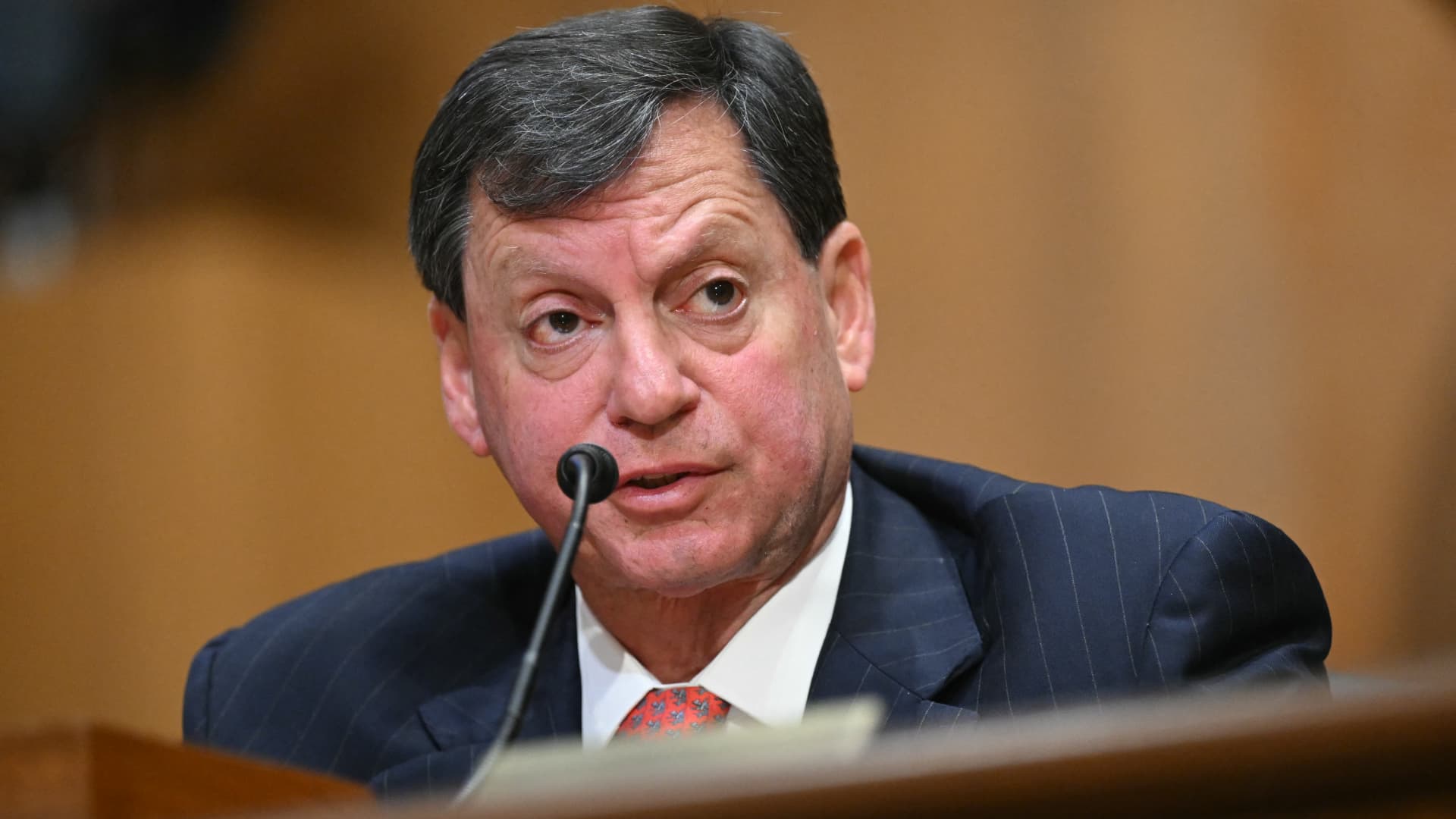
Frank Bisignano testifies before the Senate Finance Committee on his nomination to be Commissioner of the Social Security Administration, on Capitol Hill in Washington, DC, March 25, 2025.
Saul Loeb | AFP | Getty Images
The Senate has voted to confirm Frank Bisignano as the new commissioner of the Social Security Administration, ushering in new leadership at a federal agency that has already undergone many changes this year under the Trump administration’s Department of Government Efficiency.
Bisignano, the chairman and CEO of payments and financial technology company Fiserv Inc., was nominated to serve as Social Security commissioner in December by then President-elect Donald Trump. Trump started his second term on Jan. 20.
The Social Security Administration, which provides monthly benefit checks to more than 73 million beneficiaries, is currently operating under temporary leadership. Acting commissioner Leland Dudek took the helm in February, replacing Michelle King, who stepped down from the temporary role due to concerns about DOGE’s access to sensitive data.
A federal judge has since granted a preliminary injunction that prevents DOGE from accessing personally identifiable information including Social Security numbers, medical records, addresses, bank records, tax information and other sensitive data.
Bisignano’s confirmation vote on Tuesday was divided by party lines. Prior to the vote, Republicans had expressed support for Trump’s nominee, while Democrats raised concerns about Bisignano’s prospective leadership and his alleged ties to DOGE.
More from Personal Finance:
Social Security reduces benefit clawback rate
Trump administration restarts student loan collections
What experts say about claiming Social Security benefits early
On the eve of the Senate confirmation vote, Democrats including Sens. Elizabeth Warren of Massachusetts and Ron Wyden of Oregon held a rally outside the Senate building to oppose Bisignano’s nomination.
“We want Donald Trump to stand with working families and seniors and stop the attack on Social Security once and for all,” Wyden, ranking member of the Senate Finance Committee, said at the Monday event.
Following the Tuesday Senate vote, advocacy groups expressed concern about the new agency leadership.
“This vote was an opportunity for the Senate to reject the decimation of Social Security, and demand that Trump nominate a commissioner who will stop the bleeding,” Nancy Altman, president of Social Security Works, said in a statement. “Instead, every Senate Republican just signed off on the DOGE destruction of Social Security.”
Neither Fiserv nor the White House responded to CNBC’s requests for comment by press time.
Who is Frank Bisignano?
Bisignano currently serves as chairman and CEO of Fiserv, which processes more than $2.5 trillion in payments per day, according to his Senate testimony.
Bisignano came to that role after serving as chairman and CEO of First Data Corp., which went public in 2015 and combined with Fiserv in 2019.
Before that, Bisignano was co-chief operating officer for JPMorgan Chase and CEO of its mortgage banking unit. Prior to JPMorgan Chase, he held several roles at Citigroup.
Bisignano was raised in a working class, multigenerational immigrant household in Brooklyn, New York, according to his Senate testimony. Bisignano’s father was a 46-year Department of Treasury employee who worked in customs enforcement.
“He was the hardest working person I’ve known,” Bisignano said in his Senate testimony. “I view federal workers from that vantage point.”
What lawmakers said about Bisignano’s nomination
During the consideration of Bisignano’s nomination, Democrats repeatedly raised concerns about his viability to lead the agency.
Warren and Wyden sent a letter to Bisignano ahead of his March confirmation hearing to ask about his views on privatizing the agency. The efforts by DOGE to “hollow out” the agency and “deprive Americans of Social Security benefits they earned and need” may pave the way for a “private sector fix,” the Democratic leaders said.
In his Senate testimony, Bisignano said he did not intend to privatize the agency.
“I’ve never thought about privatizing,” Bisignano said. “It’s not a word that anybody’s ever talked to me about. I don’t see this institution as anything other than a government agency that gets run for the American public.”

During the Senate hearing, Bisignano also faced questions about his involvement with recent changes at the Social Security Administration and with DOGE.
Wyden introduced an anonymous whistleblower letter from a “senior Social Security Administration employee who recently left the agency,” who said Bisignano had been briefed on “key SSA operations, personnel and management decisions.”
In response to a question about whether he would “lock DOGE out,” Bisignano promised to protect personally identifiable information.
“I am going to do whatever is required to protect the information that is private,” Bisignano said.
However, during a February CNBC interview, Bisignano said he is “fundamentally a DOGE person.”
While Democrats have cast doubt on Bisignano’s nomination, the Fiserv CEO has received praise from Republicans and former Citigroup CEO Sandy Weill.
In a March CNBC interview, Weill praised Bisignano as a “great manager” and “terrific person.”
“He used to work for me, and I think he’s the best operations person I’ve ever met in my life,” Weill said, adding we would be “very lucky to have him in that job.”
What Bisignano has said about Social Security
During a March Senate confirmation hearing, as he fielded questions from senators on a host of issues facing the Social Security Administration, Bisignano said it will be important to “put the beneficiaries first.”
“The ability to receive payments on time and accurately is job one,” Bisignano said.
Among the priorities Bisignano said he would emphasize if confirmed include bringing the Social Security’s error rate down, citing an Office of the Inspector General report that put it at around 1%.
“That’s a very high payment processing error rate,” Bisignano said, calling it “five decimal places too high.”
Reducing the agency’s error rate will help eliminate overpayment issues, where beneficiaries receive too much money in their benefit checks. Those errors, which may take months or years to catch, typically leave beneficiaries owing large sums to the Social Security Administration.
From fiscal years 2015 through 2022, the Social Security Administration paid about $71.8 billion in improper payments out of almost $8.6 trillion in benefits, representing about 0.84%, according to a 2024 Office of the Inspector General report.
The agency is currently in the process of adjusting the default withholding rate to 50% for certain benefits affected by overpayments, such as retirement, survivors and disability insurance. Under President Joe Biden, the default rate had been lowered to 10% of monthly benefits or $10, whichever was greater.
“I’m going to make sure that we recover all the money we should recover, but on the other hand we have to be humans in the process, too,” Bisignano told the Senate about overpayment clawbacks.
Bisignano also said he planned to reduce the chronically long wait times Americans face when seeking help from the agency, including when calling its 800 number or when applying for disability benefits.
Having to wait for more than 20 minutes on the phone is not acceptable, Bisignano said. Social Security Administration data shows only about 46% of calls get answered, likely because people get discouraged and hang up, he said.
“I think we could get that to under a minute,” Bisignano said of the agency’s phone wait times, in part by making AI available to people answering the phones to more quickly prompt them with the information they need to answer individuals’ queries.
Bisignano also promised to investigate why it takes so much time to process disability applications. Initial eligibility determinations currently take around seven months, a wait time that has doubled since prior to the Covid-19 pandemic, according to the Urban Institute.
Personal Finance
How soon defaulted student loan borrowers may face collections
Published
14 hours agoon
May 6, 2025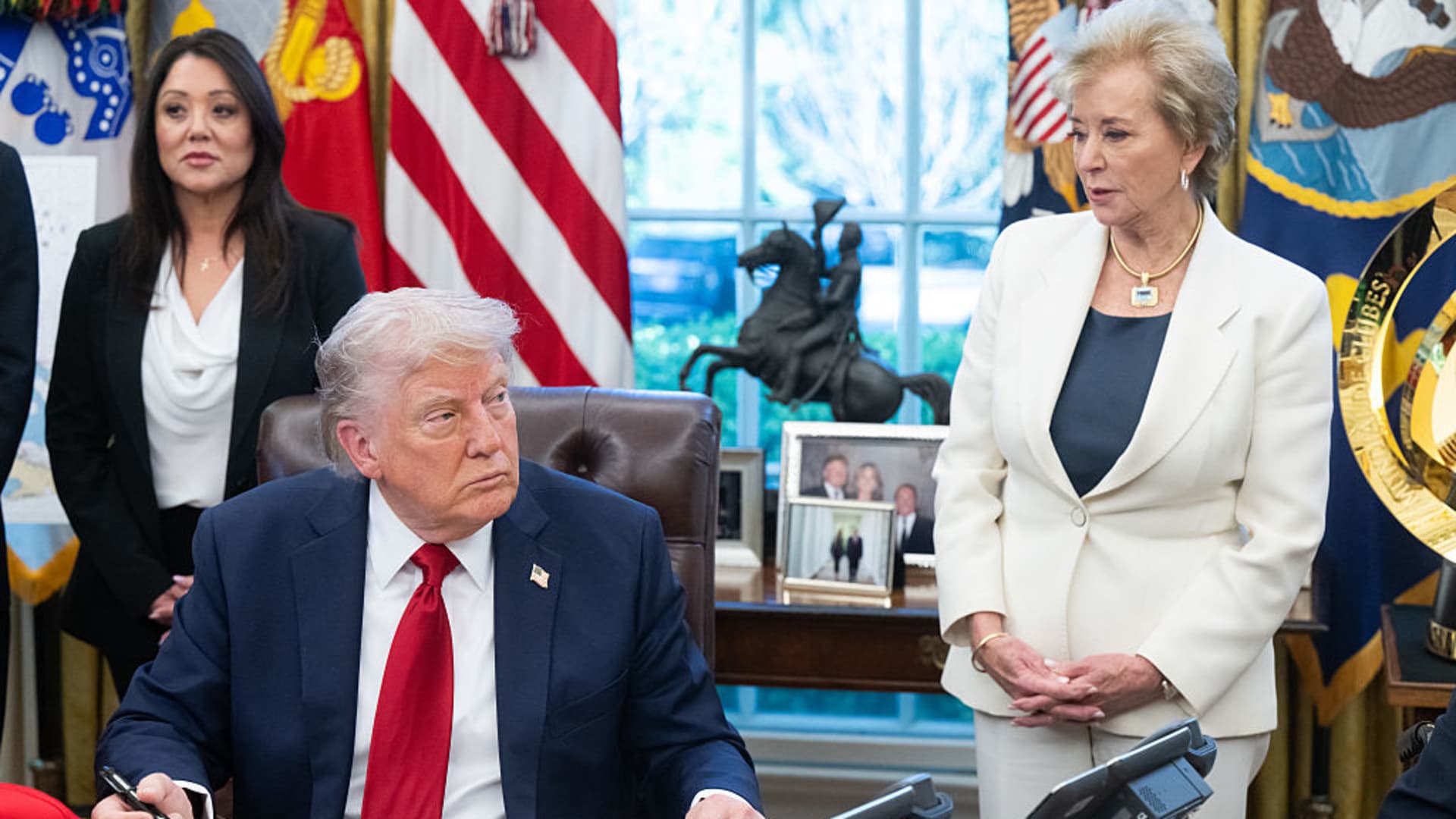
US President Donald Trump signs executive orders relating to higher education institutions, alongside US Secretary of Education Linda McMahon (R), in the Oval Office of the White House in Washington, DC, on April 23, 2025.
Saul Loeb | Afp | Getty Images
The Trump administration resumed collection efforts on defaulted student loans Monday after a roughly five-year hiatus — and affected borrowers could begin feeling the financial consequences sooner than experts expected.
The U.S. Department of Education released new details on what actions it plans to take, when.
Here’s what to know.
Federal benefits could be garnished by June
Wages at risk over the summer
The Treasury Department will send notices to 5.3 million defaulted borrowers about the collection activity of their wages “later this summer,” the Education Department wrote in the Monday press release.
How student loan collection efforts have changed
Since the pandemic began in March 2020, collection activity on federal student loans has mostly been paused. The Biden administration focused on extending relief measures to struggling borrowers in the wake of the Covid pandemic and helping them to get current.
The Trump administration’s aggressive collection activity is a sharp turn away from that strategy, experts say.
“Borrowers should pay back the debts they take on,” said U.S. Secretary of Education Linda McMahon in a video posted on X on April 22.
The U.S. government has extraordinary collection powers on federal debts and it can seize borrowers’ federal tax refunds, wages, and Social Security retirement and disability benefits.
But in the past, student loan borrowers were usually given 65 days’ notice before the garnishment of their federal benefits, said higher education expert Mark Kantrowitz.
“Odd that they say a 30-day notice,” Kantrowitz said.
Historically, the offsets to people’s retirement and disability benefits were also “a last resort,” Kantrowitz said, “occurring a year after wage garnishment and other attempts at collection had failed.”
“Given the timing, it sounds like they are not pursuing the normal due diligence schedule for collecting defaulted federal student loans,” Kantrowitz added.
Social Security garnishments may hurt retirees
Carolina Rodriguez, director of the Education Debt Consumer Assistance Program in New York, recently told CNBC that she was especially concerned about the consequences of resumed collections on retirees.
“Losing a portion of their Social Security benefits to repay student loans could mean not having enough for food, transportation to medical appointments or other basic necessities,” Rodriguez said in an April interview.

There are some 2.9 million people ages 62 and older with federal student loans, as of the first quarter of 2025, according to Education Department data. That’s a 71% increase from 2017, when there were 1.7 million such borrowers.
How to avoid collection activity
Borrowers in default will receive emails making them aware of the new policy, the Education Department said. You can contact the government’s Default Resolution Group and pursue a number of different avenues to get current on your loans, including enrolling in an income-driven repayment plan or signing up for loan rehabilitation.
Some borrowers may also be eligible for deferments or a forbearance, which are different ways to pause your payments, Rodriguez said.
“We’re advising clients to request a retroactive forbearance to cover missed payments, and a temporary forbearance until they can get enrolled in an income-driven repayment plan,” she said.
Are you at risk of collection activity because you’re behind on your student loans? If you’re willing to share your experience for an upcoming story, please email me at [email protected]
Don’t miss these insights from CNBC PRO
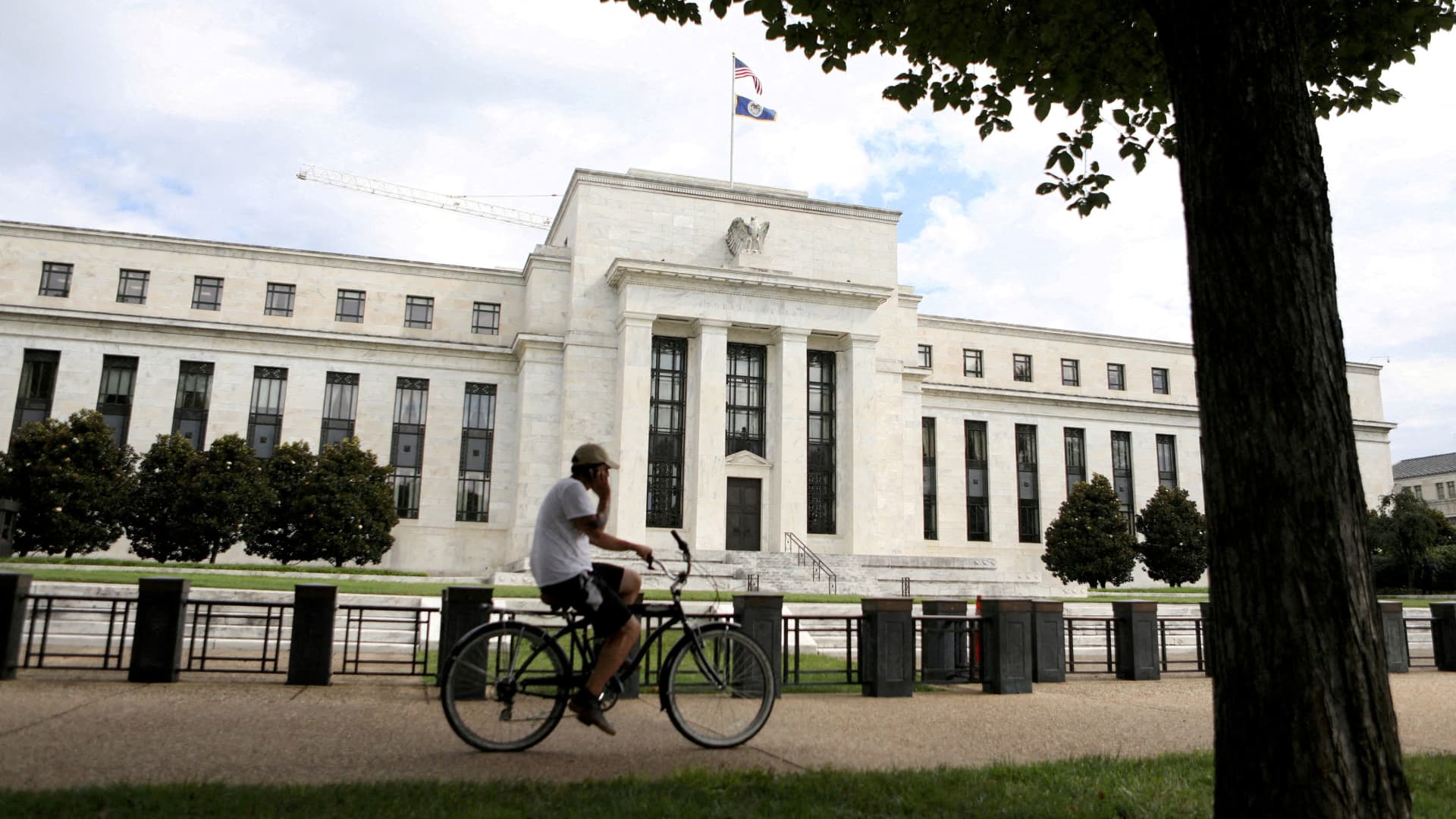

On the heels of a stronger-than-expected jobs report and elevated inflation readings, the Federal Reserve is expected to hold interest rates steady at the end of its two-day meeting this week — despite pressure from President Donald Trump.
“Consumers have been waiting for years to see pricing come down. NO INFLATION, THE FED SHOULD LOWER ITS RATE!!!” Trump said in a Truth Social post Friday.
As an independent agency, the central bank has always operated autonomously from the White House. Federal Reserve Chair Jerome Powell has repeatedly said that monetary policy decisions are completely separate from politics. At the same time, the president’s new trade policies are a barrier to cutting rates, in part because economists expect the new tariffs could lead to a widespread rise in prices that complicate inflation forecasts.
To be sure, many Americans are getting squeezed by high prices and high borrowing costs, while the potential inflation impacts from a costly trade war weigh heavily on household budgets.
“Consumers are always the ones who pay the price,” said Eugenio Aleman, chief economist at Raymond James.
More from Personal Finance:
What experts say about selling gold jewelry for cash
What typically happens to stocks after periods of high volatility
Why tariffs will hurt low income Americans more than rich
The federal funds rate sets what banks charge each other for overnight lending, but also affects many of the borrowing and savings rates consumers see every day.
“Uncertainty rules amid a trade war and the ever-changing landscape of tariffs,” said Greg McBride, Bankrate’s chief financial analyst. “But with the hard data on consumer spending and employment still hanging in there, the Fed will remain firmly planted on the sidelines.”
Markets now widely expect the Fed to wait to cut rates until July, with two or three more reductions to follow by the end of the year.
Once the federal funds rate comes down, borrowing costs could decrease across a variety of consumer debt, such as auto loans, credit cards and mortgage rates, making it easier to access cheaper money.
Here’s a breakdown of how it works.
Credit cards
Most credit cards have a variable rate, so there’s a direct connection to the Fed’s benchmark.
For the most part, the average annual percentage rate has hovered just over 20% this year, according to Bankrate, not far from last year’s all-time high.
The Fed holding steady isn’t the only thing keeping credit card rates high. “Banks are nervous about all of the uncertainty in the economy and what it means for consumers,” said Matt Schulz, chief credit analyst at LendingTree.
“When that happens, banks try to minimize risk as much as possible, and one of the ways they do that is to raise interest rates on credit cards,” he said.
Credit card debt continues to be a pain point for consumers struggling to keep up with high prices. Total credit card debt and average balances are also at record highs.
Mortgages
Although 15- and 30-year mortgage rates are largely tied to Treasury yields and the economy, concerns about the direction of the economic policy and Trump’s tariff plans have been a drag on rates, according to the Mortgage Bankers Association.
The average rate for a 30-year, fixed-rate mortgage is now 6.81%, down from 7.04% at the beginning of the year, according to Bankrate. But for potential home buyers, that’s not enough of a decline to give the housing market a boost.
“Unfortunately for those shopping for a home this summer, rates are likely to stay in or around that range in the near future,” Schulz said.
Auto loans
Although auto loan rates have seen little change, car payments have gone up because prices are rising, while Trump’s 25% tariffs of imported vehicles adds more pressure.
Currently, the average rate on a five-year new car loan is 7.33%, down from 7.53% in January, according to Bankrate.
Student loans
Federal student loan rates are fixed for the life of the loan, so most borrowers are somewhat shielded from Fed moves and recent economic turmoil.
Interest rates for the upcoming school year will be based in part on the May auction of the 10-year Treasury note and aren’t likely to change much. Undergraduate students who took out direct federal student loans for the 2024-25 academic year are paying 6.53%, up from 5.50% in 2023-24.
Although borrowers with existing federal student debt balances won’t see their rates change, many are now facing other headwinds and fewer federal loan forgiveness options.
Savings
On the upside, top-yielding online savings accounts still offer above-average returns and currently pay as much as 4.5%, according to Bankrate. While the central bank has no direct influence on deposit rates, the yields tend to be correlated to changes in the target federal funds rate — so holding that rate unchanged has kept savings rates elevated, for now.
“For consumers, oftentimes the best way to protect your finances in times of uncertainty is to double-down on boosting emergency savings and eliminating high interest rate debt,” said Bankrate’s McBride. “This builds a buffer in the event of an income disruption or unanticipated expenses and insulates you from costly borrowing.”

In the blogs: Start to finish

What it means for Social Security benefits

Stocks making the biggest moves after hours: SMCI, WYNN, EA

New 2023 K-1 instructions stir the CAMT pot for partnerships and corporations

The Essential Practice of Bank and Credit Card Statement Reconciliation

Are American progressives making themselves sad?
Trending
-

 Finance4 days ago
Finance4 days agoWarren Buffett to ask board to make Greg Abel CEO of Berkshire Hathaway at year-end
-

 Personal Finance1 week ago
Personal Finance1 week agoAs Real ID deadline approaches, there are ‘workarounds,’ experts say
-

 Economics1 week ago
Economics1 week agoWater sommeliers say the simplest drink is the future of luxury
-

 Finance4 days ago
Finance4 days agoBerkshire meeting ‘bazaar’ features Buffett Squishmallows, 60th anniversary book and giant claw machine
-

 Personal Finance6 days ago
Personal Finance6 days agoMillions of older workers lost jobs during Covid. Prospects have improved
-
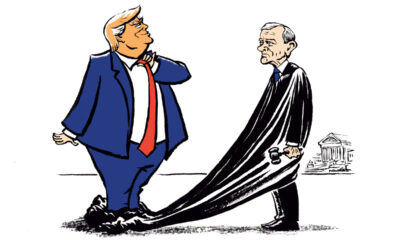
 Economics6 days ago
Economics6 days agoHow Donald Trump could rescue John Roberts
-

 Personal Finance7 days ago
Personal Finance7 days agoWhy Roth conversions are popular when the stock market dips
-

 Economics6 days ago
Economics6 days agoJobs report Friday to provide important clues on where the economy is heading
